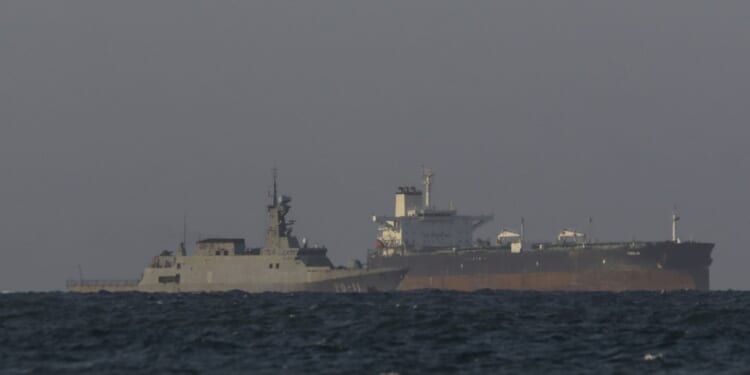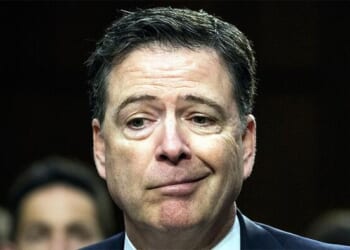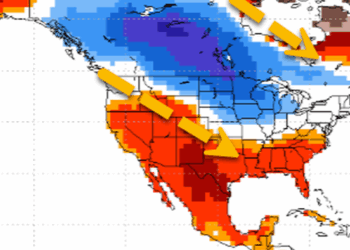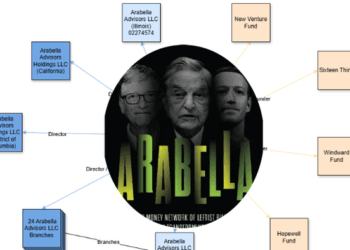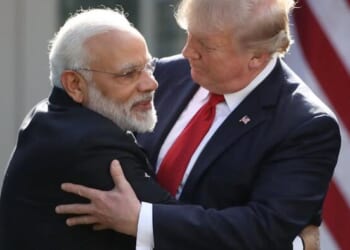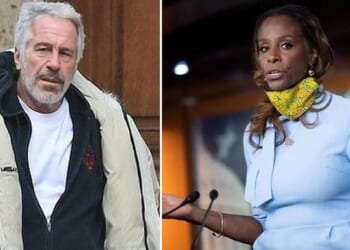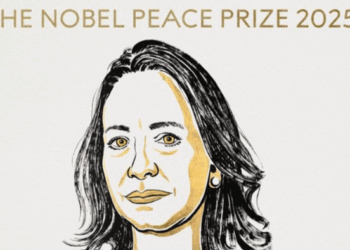
More than two months—and at least 83 fatalities—into the U.S. air campaign against suspected drug boats in the Caribbean Sea and eastern Pacific Ocean, the operation’s overall purpose and strategy remain unclear. Is the goal to oust President Nicolás Maduro’s dictatorial regime? Or is this a broader battle against drug trafficking writ large, as Defense Secretary Pete Hegseth insists? “To all narco-terrorists who threaten our homeland: if you want to stay alive, stop trafficking drugs,” he tweeted. “If you keep trafficking deadly drugs—we will kill you.”
Supporters of the buildup—which now includes some 15,000 military personnel, three missile-firing destroyers, and an aircraft carrier—argue that the two goals are the same. If Venezuela is a “drug caliphate,” toppling Maduro would strike a blow against the cartels that could reverberate throughout the region. The administration has told Congress that the United States is now in an “armed conflict” with drug cartels, with the Venezuelan regime as the primary target.
The legality—and morality—of declaring that smugglers are “unlawful combatants” who can be killed even when they pose no immediate threat is questionable. Nor are the Venezuelan trafficking groups designated as foreign terrorist organizations (FTOs) among those that pose the greatest threat to U.S. citizens. Neither the so-called “Cartel de los Soles” nor the “Tren de Aragua” are known for trafficking in fentanyl, the opioid associated with most U.S. overdoses. The substance is manufactured in Mexico, usually from precursors made in China.
The Cartel de los Soles (or Cartel of the Suns, named for the insignias worn by Venezuelan generals) refers to corrupt military officials who engage in a variety of rackets, including cocaine trafficking, fuel smuggling, and illegal mining. Tren de Aragua is a gang that was born in Venezuelan prisons and then spread into South America, trafficking in drugs and other illegal activities carried out in cooperation or competition with local criminals.
While drug trafficking gangs use terror to intimidate their opponents, they generally do not form cohesive organizations with a shared ideological objective, although they may collaborate with armed insurgencies. The primary motivation of transnational criminal organizations is making money. As long as they have illicit markets to exploit and access to firearms—plus local institutions too intimidated or compromised to oppose them—they will continue to regenerate.
More than 50 years of military operations against the producers and traffickers of illicit drugs should have taught policymakers at least one lesson: Armed force alone does not work.
If lethal force were an effective deterrent, the U.S. and its allies would have long ago curbed the dangerous drugs that poison consumers not only in the United States but also in Europe, Africa, and Asia. Latin American countries have deployed military might (with U.S.-supplied equipment, training, and intelligence) for decades in an effort to stop the cultivation, manufacture, and transport of marijuana, cocaine, heroin, and synthetic substances.
As counternarcotics nerds know only too well, the application of force tends to simply shift drug production and routes from one region to another, i.e., the “balloon effect.” Or more colorfully in Spanish, “el efecto cucaracha”: Bug bombing cockroaches in one place doesn’t stop them from emerging in greater numbers somewhere else.
U.S.-funded military operations have repeatedly pushed drugs from one region to another. In the 1970s, the Mexican military used U.S.-supplied helicopters to fumigate marijuana fields with paraquat, a highly poisonous herbicide. Marijuana production then migrated to northeastern Colombia. Coca cultivation in the Andes Mountains has shifted among Bolivia, Peru, and Colombia since the 1980s, at least partly in response to militarized counternarcotics efforts, such as Operation Blast Furnace, Operation Snowcap, and Plan Colombia.
The opioid epidemic provides yet another example of criminal resilience. The rise in overdose deaths began with the overprescription of legal medications, such as OxyContin, in the 1990s. Many addicts shifted to heroin after 2010 and then to fentanyl a few years later. Mexican traffickers were happy to switch from heroin to synthetics, such as fentanyl and its analogs, which are more potent, cheaper to produce, and easier to transport.
Meanwhile, organized crime throughout Latin America has grown increasingly diversified and globalized. The term “cartel” was always a misnomer: The multiple groups that traffic in drugs, weapons, wildlife, gold, and migrants have never managed to collude effectively for control of markets. That is even truer now than it was some 40 years ago when journalists adopted the term to describe the Colombian organizations that once dominated the cocaine trade, only to see their transnational clout fade as routes shifted from the Caribbean to Mexico and Central America. In recent years, these routes have not simply moved but multiplied as traffickers ship record amounts of cocaine to Europe and beyond.
Today, Latin American traffickers both compete and collaborate with criminal groups from around the world: the Italian ’Ndrangheta, Albanian clans, Turkish crime syndicates, and others. As traffickers seek new routes to new markets, they leave a trail of violence, infecting countries that once seemed relatively immune to the illegal drug plague, such as Ecuador, which went from one of South America’s safer countries in 2020 with a homicide rate of 7.7 per 100,000 to the continent’s most dangerous in 2023 with a staggering rate of 44.5 per 100,000.
Ecuador offers a cautionary lesson on the limits of military force. The country’s young president, Daniel Noboa, imposed a state of emergency in 2024, militarizing the ports, the prisons, and the streets. The bloodshed subsided slightly but then spiraled out of control again in early 2025 as criminal gangs imploded into competing factions, clashing not only with authorities but also among themselves.
Hegseth’s threat—“we will kill you”—seems unlikely to deter criminals who keep killing each other—along with innocent bystanders—in tragically epic numbers. We know little about the 83 people killed in 21 U.S. strikes since early September. But if they were transporting illicit drugs, we can be sure their lives were deemed expendable—a negligible cost of doing business—by the transnational criminal groups that generate billions in illicit proceeds each year.
And what if the military buildup in the Caribbean succeeds in forcing Maduro from power? Will this curb the power of “narco-terrorists” in our hemisphere?
The most promising theory of regime change in Venezuela is that disgruntled members of the armed forces will force Maduro from power. The best-case scenario is a bloodless coup by the country’s generals to avert U.S. airstrikes on targets inside Venezuela. That’s the easy way. The hard way would be to accelerate regime collapse by bombing military bases and critical infrastructure, such as oil facilities, thus triggering a potentially bloody rebellion in the ranks.
Neither scenario poses any real threat to transnational organized crime in the hemisphere. Venezuela’s military may rely on drug traffickers to bolster a corrupt regime, but that doesn’t mean that drug traffickers rely on the Venezuelan military. The country is a transshipment point, not a major drug producer. Routes can be shifted, further destabilizing neighboring countries.
And if regime change triggers prolonged chaos, Venezuelan drug smugglers, arms traffickers, and other criminal actors will likely grow even more powerful. For a preview of what regime collapse looks like, U.S. strategists should take a careful look at Haiti, a much smaller country where criminal gangs flourish despite (or perhaps because of) multiple poorly planned and under-resourced foreign interventions.
The trafficking of addictive illicit substances is a real threat to public health and safety. Drug consumption has sickened or killed countless individuals while the violence associated with drug trafficking has turned cities and regions into war zones, displacing waves of migrants into neighboring countries, including the United States. Calling traffickers “narco-terrorists” actually understates the threat: Al-Qaeda never had the reach or the wealth of today’s transnational criminal networks. Or their ability to constantly adapt and regenerate.
Drug trafficking can be addressed only through long-term efforts to improve law enforcement, both in the United States and abroad. At the international level, that means sustained cooperation among U.S. and Latin American governments to share intelligence and prosecute not only those who manufacture or transport drugs but also the white-collar criminals who launder their profits. At the local level, it means replicating and adapting data-driven, community-informed approaches, which have helped reduce violence in both the U.S. and Latin America, such as hotspot policing and focused deterrence.
It also means addressing the demand for drugs through better prevention and treatment. The distribution of medicines, such as naloxone, has helped reduce overdose deaths significantly in the United States. Other medications help users reduce their craving for drugs and lessen the pain of withdrawal. Local and state public health officials fear federal cuts now threaten access to such treatments.
The United States—for all its military might—cannot defeat “narco-terrorism” unilaterally by ousting a corrupt and brutal dictator. Whatever the end game of the U.S. military deployment in the Caribbean, the region’s drug cartels have nothing to fear.

